Two stones are thrown up simultaneously from the edge of a cliff 200m high with initial speeds of 15ms−1 and 30ms−1. Verify that the graph shown in Fig. 2 ( NCT). 13 , correctly represents the time variation of the relative position of the second stone with respect to the first. Neglect the air resistance and assume that the stones do not rebound after hitting the ground. Take g=10ms−2.Give equations for the linear and curved parts of the plot.
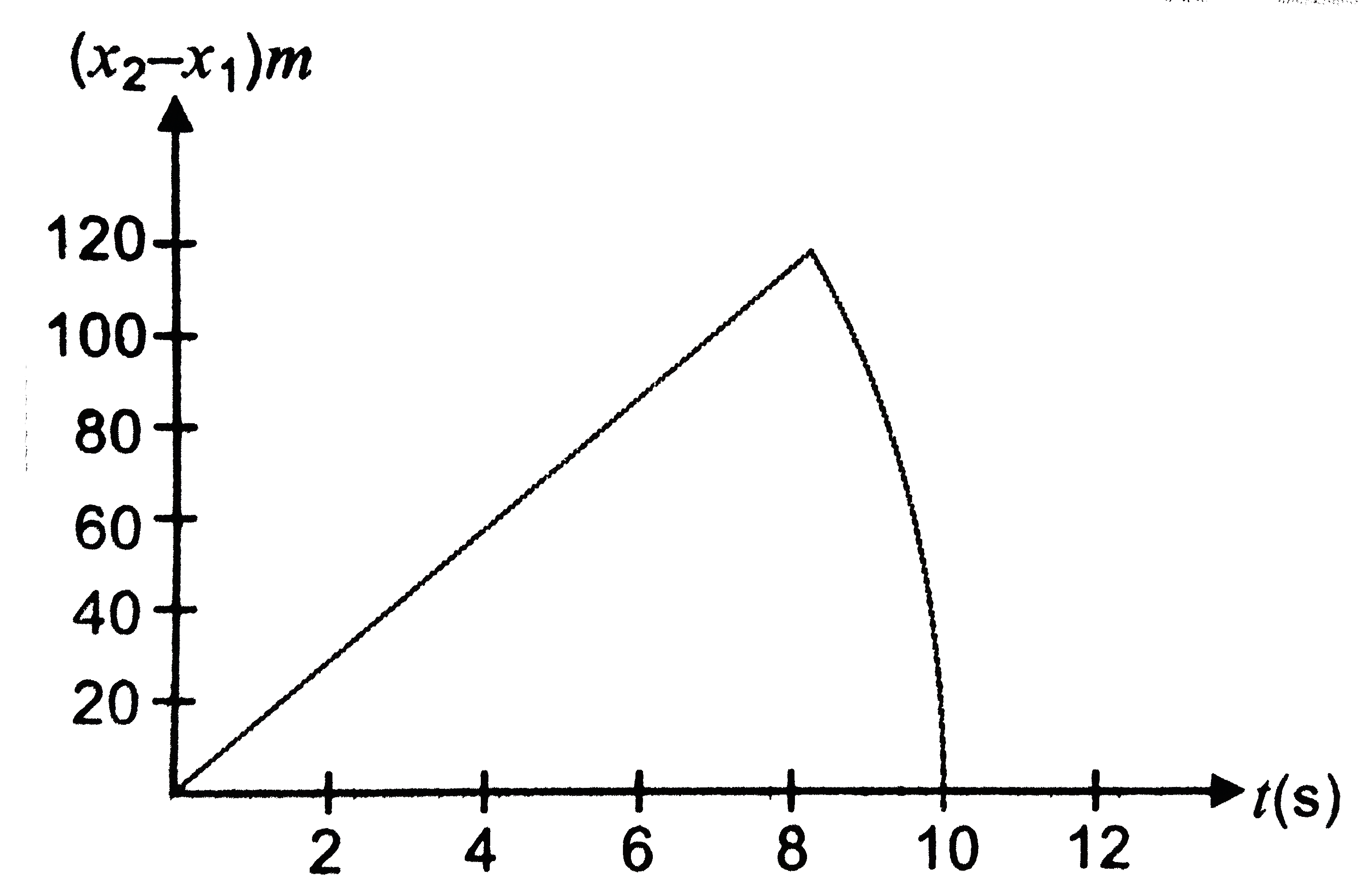 .
.
Consider the upwared motion of 1st stone:
x0=200m,u=15ms−1,g=−10ms−2,x=x
x1=x0+ut+12>2
x1=200+15t−5t2
When first stone hits the ground then
x1=0, we get 200+15t−5t2=0
t2−3t−40=0
solving we get t=−5s or t=8s
As t=-5 s is meaningless
Therefore t=8s
Similarly when 2nd stone hits the ground then
x2=0
x0=200m,u=30ms−1,g=−10ms−2,x=x2
We get x2=x0+ut+12>2
0=200+30t−5t2
200+30t−5t2=0
or t2−6t−40=0
Solving we get t=−4, or t=10s
As t=-4 is meaningless
therefore, t=10s.
From i and ii we get relatie position of second stone w.r.t. first stone
x2−x1=15t
The first stone will be in motion for 8 seconds
As x2−x1=t
Therefore graph will be a straight line for t=8 sec. and the maximum separation between two stones
=15t=15×8=120m
After 8sec, only 2nd stone will be in motion and the graph is in accordance with the equation x2=200+30t−15t2 for an interval between 8s. to 10s.
Topper's Solved these Questions
- BOOK - MODERN PUBLICATIONCHAPTER - MOTION IN A STRAIGHT LINE EXERCISE - NCERT (VERY SHORT ANSWER TYPE QUESTION)5videos
MOTION IN A STRAIGHT LINE
- BOOK - MODERN PUBLICATIONCHAPTER - MOTION IN A STRAIGHT LINE EXERCISE - NCERT (SHORT ANSWER TYPE QUESTION)6videos
MOTION IN A STRAIGHT LINE
- BOOK - MODERN PUBLICATIONCHAPTER - MOTION IN A STRAIGHT LINE EXERCISE - NCERT (TEXTBOOK EXERCISES )22videos
MOTION IN A STRAIGHT LINE
- BOOK - MODERN PUBLICATIONCHAPTER - MOTION IN A PLANE EXERCISE - Chapter Practice Test15videos
MOTION IN A PLANE
- BOOK - MODERN PUBLICATIONCHAPTER - OSCILLATIONS EXERCISE - Practice Test (For Board Examination)12videos
OSCILLATIONS
Similar Questions
Two stones are thrown up simultaneously from the edge of a cliff 200m high with initial speeds of 15ms?−1 and 30−1. Verify that the graph shown in Fig. 2 ( NCT). 13 , correctly represents the time variation of the relativ e position of the second stone with respect to the first. Neglect the air resistance and assume that the stones do not rebound after hitting the ground. Taje g=10ms−2.Give equations for the linear and curved parts of the plot.
 .View Solution
.View SolutionA stone is thrown upwards and it rises to a height 0f 200m. The relative velocity of the stone with respect to the earth will be maximum at :-
View Solution
Knowledge Check
- Question 1 - Select One
Two stones are thrown up simultaneously from the edge of a cliff 200 m high with initial speeds of 15ms−1 and 30ms−1 respectively. The time variation of the relative position of the second stone will request to the first as shown in the figure. The equation of the linear part is
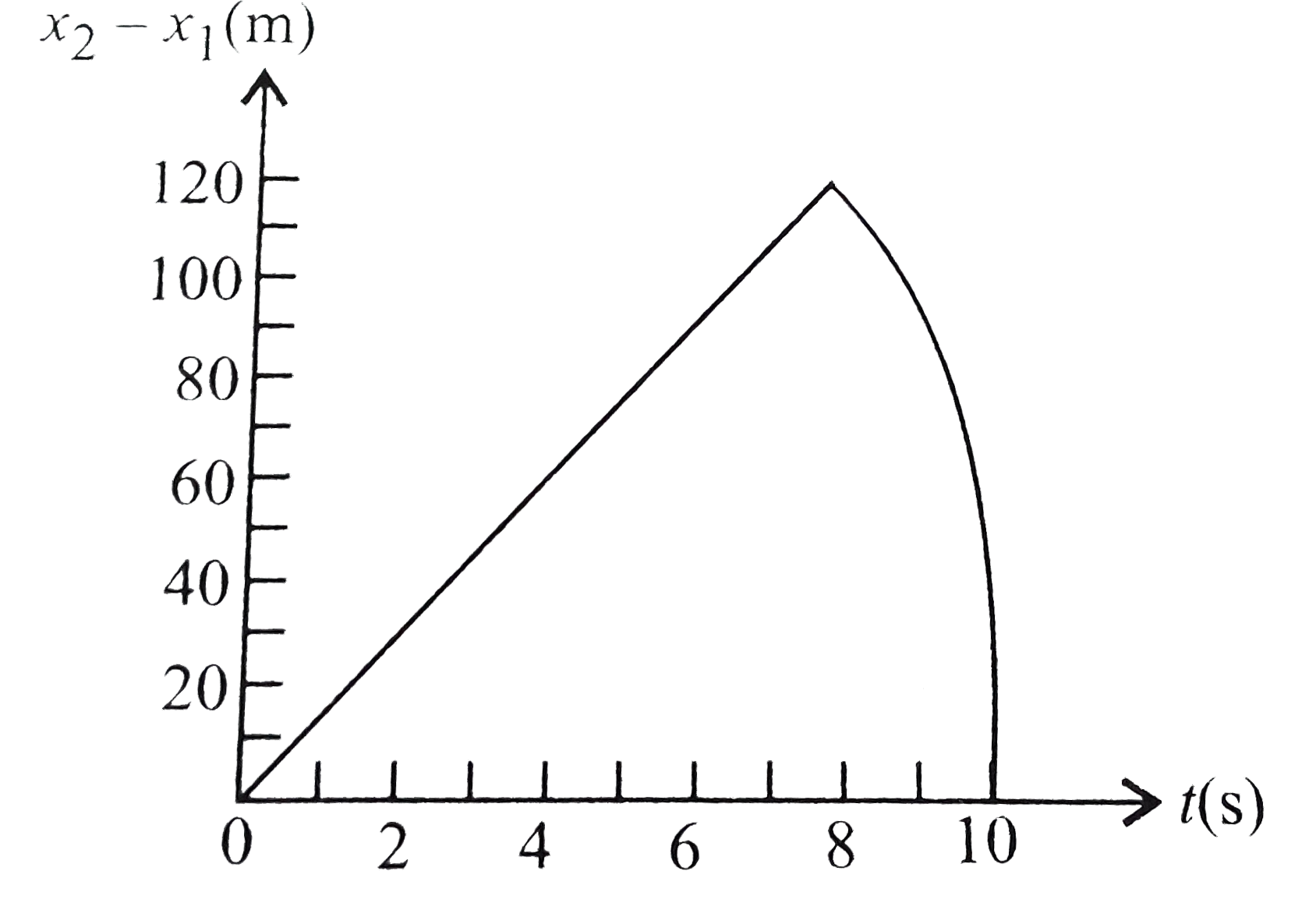 Ax2−x1 = 50tBx2−x1 = 10tCx2−x1 = 15tDx2−x1 = 20t
Ax2−x1 = 50tBx2−x1 = 10tCx2−x1 = 15tDx2−x1 = 20t - Question 2 - Select One
Two stones are through up simultaneously from the edge of a cliff 240 m high with initial speed of 10 m/s and 40 m/s respectively. Which of the following graphs best represents the time variation of relative position of the second stone with respect to the first? Assume stones do not rebound after hitting the ground and neglect air resistance, take . g=10m/s2 (The figures are schematic and not drawn to scale)
A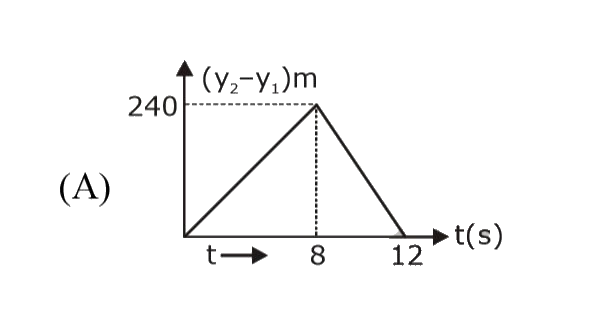 B
B C
C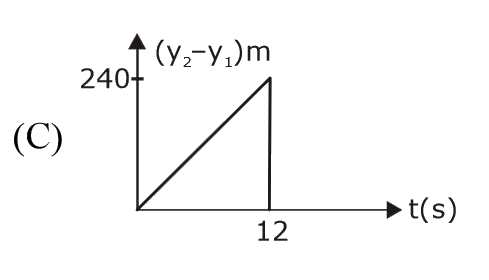 D
D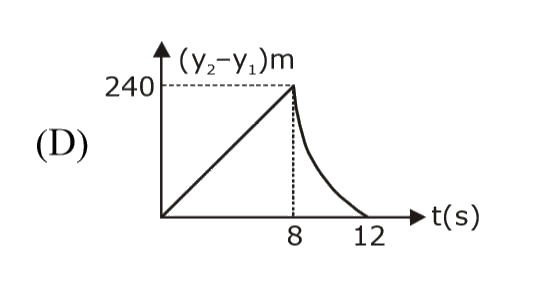
- Question 3 - Select One
Two stones are thrown up simultaneously from the edge of a cliff 240m high with initial speed of 10m/sand40m/s respectively . Which of the following graph best represents the time variation of relative position of the speed stone with respect to the first ?
( Assume stones do not rebound after hitting the groumd and neglect air resistance , take g=10m/s2)
( The figure are schematic and not drawn to scale )A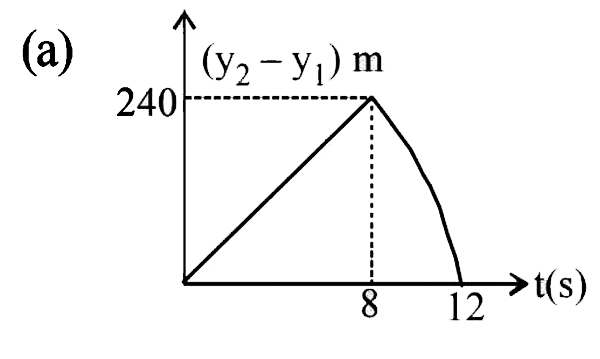 B
B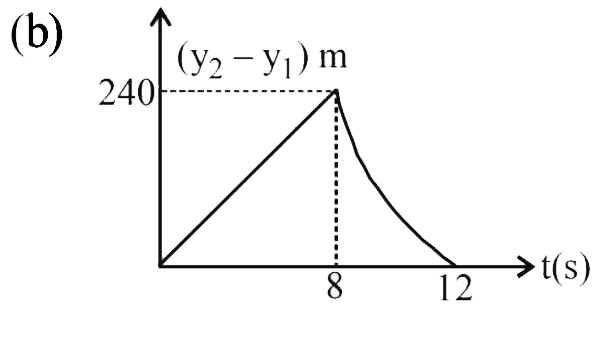 C
C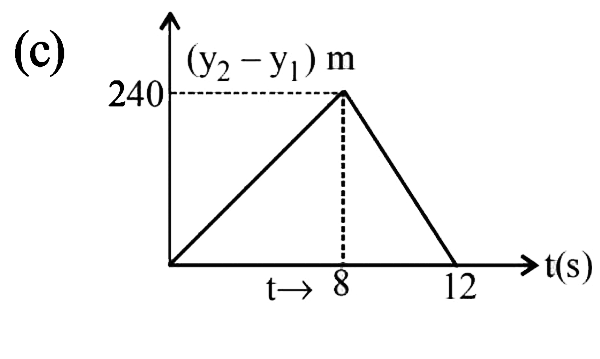 D
D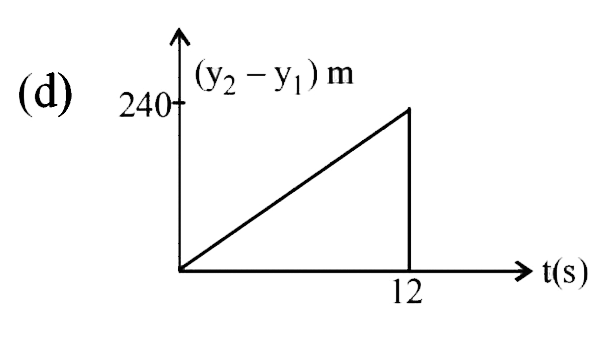
A hiker stands on the edge of a cliff 490m above the ground and throwns a stone horiozontally with an initial speed of 15ms−1 neglecting air resistance.The time taken by the stone to reach the ground in seconds is (g=9.8ms2)
View SolutionTwo stones are through up simultaneously from the edge of a cliff 240 m high with initial speed of 10 m/s and 40 m/s respectively. Which of the following graphs best represents the time variation of relative position of the second stone with respect to the first? Assume stones do not rebound after hitting the ground and neglect air resistance, take . g=10m/s2 (The figures are schematic and not drawn to scale)
View SolutionTwo stones are thrown up simultaneously with initial speeds of u1 and u2(u2>1u1). They hit the ground after 6 s and 10 s respectively. Which graph in fig. correctly represents the time variation of Δx=(x2−x1) the relative position of the second stone with respect to the first upto t=10 s? Assume that the stones do not rebound after hitting the ground.
View SolutionTwo stones are thrown up simultaneously from the edge of a cliff with initial speed vand2v. The relative position of the second stone with respect to first varies with time till both the stones strike the ground as.
View SolutionTwo stones are thrown vertically upwards simultaneously from the same point on the ground with initial speed u1=30m/sec and u2=50m/sec. Which of the curve represent correct variation (for the time interval in which both reach the ground) of
(x2−x1) = the relative position of second stone with respect to first with time (t)
(v2−v1) = the relative velocity of second stone with respect to first with time (t).
Assuming that stones do not rebound after hitting.View Solution

